Frozen in Terror: The crash of Sol Líneas Aéreas flight 5428
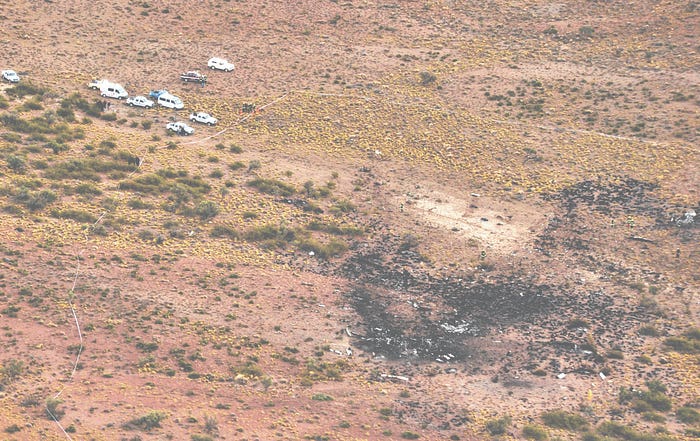
On the 18th of May 2011, a regional flight in Argentina suddenly plunged from the sky over the night-shrouded desert of Patagonia, spiraling down to its doom in just 44 seconds. All that remained of the Saab 340 and its 22 passengers and crew was a smoking crater in the wilderness and a final, eerie transmission, containing a desperate “mayday” followed only by silence.
When investigators finally listened to the cockpit voice recording, they could discern, beneath the static and propeller noise, the contours of an unfolding tragedy. As the two pilots complained about safety at the airline, their airplane began to accumulate ice at an alarming rate. And then, when they tried to descend toward better conditions, the plane suddenly stalled, rolled, and dived, banking wildly back and forth as it plummeted toward the ground, her pilots fighting in vain to regain control, as the first officer uttered his last, heartbreaking words: “Easy, easy, we’re going to save it!” But they could not, and they perished alongside their passengers — unaware until the end that they had misled themselves about the reason they were falling, but well aware of who had set them up for disaster.
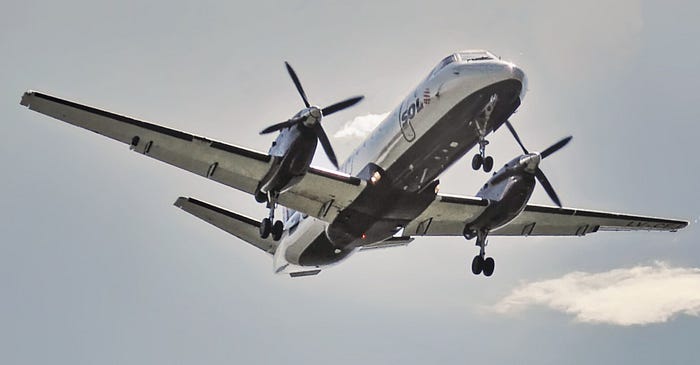
In 2005, as part of a joint venture involving a regional government and private investors, Sol Líneas Aéreas was launched in order to provide air carrier service between the cities of central and southern Argentina, a vast area marked by immense stretches of desert, mountains, and inhospitable weather. To support its operations, the new airline acquired a fleet of four Swedish-built Saab 340 regional turboprops capable of carrying up to 34 passengers. Anything bigger would be inappropriate for the size of the passenger market in the country’s empty interior.
One of these Saab 340s was LV-CEJ, which — like its sister ships — spent its days puddle-jumping across the country, working its way down from the more densely populated north toward the sparsely populated south. The 18th of May 2011 was no different, with the plane leaving Rosario that morning before making stops in Córdoba, Mendoza, and Neuquén. Only one leg remained: an evening flight to Comodoro Rivadavia, a city of about 180,000 people on the eastern coast of Patagonia.
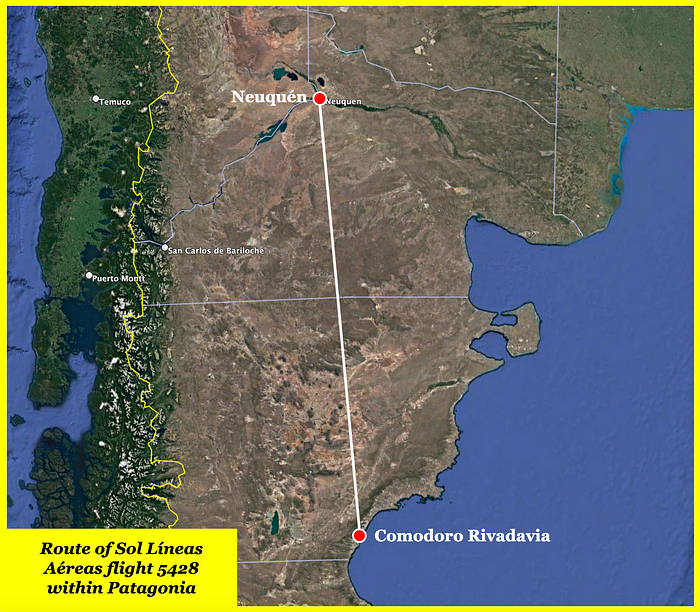
In command of flight 5428 to Comodoro Rivadavia that night was 45-year-old Captain Juan Raffo, a fairly experienced pilot with 6,900 total hours, including a healthy 2,180 hours in the Saab 340. Joining him was 37-year-old rookie First Officer Adriano Bolatti, who had recently started flying for Sol and had just 286 hours on the Saab 340, out of 1,340 total. He was so new to the aircraft that he had only been flying without an instructor for about a month, but that didn’t mean he was going to sit quietly: he was described by his friends as extremely outgoing, and it would be his voice, not his captain’s, which would come to dominate the cockpit conversation.
The conversation as they oversaw the boarding of 19 passengers and a flight attendant likely concerned two main topics: the weight of the airplane, and the weather. The connection between these two areas would not have been lost on Captain Raffo, who had once experienced a severe accumulation of ice while flying in bad weather over Patagonia, and had been extra careful in such situations ever since. Both he and his first officer were aware that if the plane was too heavy — not an uncommon occurrence at Sol Líneas Aéreas — it might not have the performance needed to handle a detrimental buildup of ice on the wings. But that day their weight was below the maximum, and the weather forecast indicated only the possibility of light ice accumulation above 8,000 feet, so the pilots went ahead with the flight.
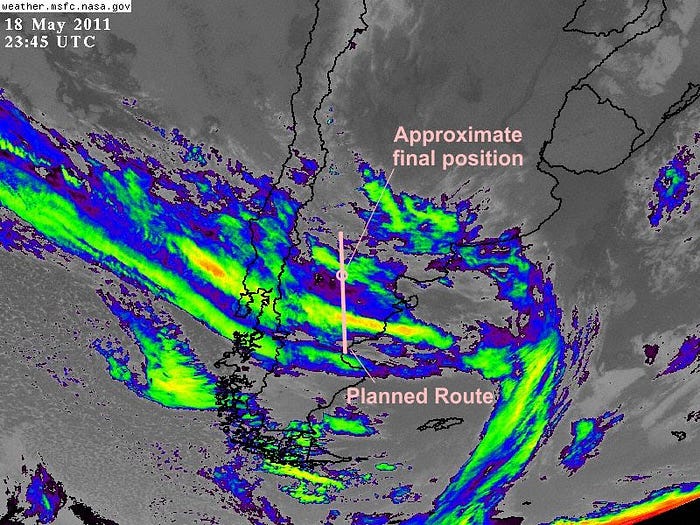
By the time the cockpit voice recording began at about 17:52 local time, flight 5428 was already in the air, climbing toward its cruising altitude of 19,000 feet. Already, the pilots were having second thoughts about the weather. “We should have stayed today, Juan,” First Officer Bolatti could be heard saying. “This will break the plane. You stay when it’s raining and cold.”
This comment led them into a discussion of labor problems at the airline, which were apparently numerous. At some point, First Officer Bolatti pulled out a letter from company management and read it aloud, to which Captain Raffo derisively replied, “These people don’t know what it means to fly in this zone with these planes, I’m talking specifically these planes.”
“What I see is that the son of a bitch gets like this… see! There it is. Let’s get out of the layer, Juan.”
Flight 5428 was climbing through 17,000 feet, but its performance had already degraded to the point that 19,000 feet looked unreachable. The reason was not ice, but engine power: at no point during their prior conversation did either pilot increase power to continue their ascent above 17,000 feet.
“I want to gain speed,” Captain Raffo commented. He probably meant vertical speed, because First Officer Bolatti immediately replied, “Vertical.”
Looking back, Bolatti said, “I don’t have any ice, eh.”
“Yes,” Raffo gruffly replied.
“Yes, but very little. Do you see it or not?” Bolatti asked.
“Ah yes, there I see a little line. I’ve got it there,” said Raffo.
“It gets you nervous, ice,” said Bolatti.

Even though the pilots had by now instructed the autopilot to increase their rate of climb, the plane only managed to drag itself up to 17,800 feet before leveling off, apparently having reached the artificial service ceiling imposed by its low engine power setting. The autopilot remained in vertical speed mode, trying to achieve a climb rate of 100 feet per minute, but the plane simply wouldn’t go any higher. “We should have bought some Dash,” Captain Raffo joked, referring to the series of regional airliners by Saab’s competitor Bombardier. Around this time, someone flicked on the plane’s wing de-icing and engine anti-icing systems.
Cruising along at 17,800 feet, their airspeed began to drop, while their pitch angle slowly increased. The engines had not been set to produce enough power to remain at that altitude, especially with the anti-ice systems drawing additional power, but the pilots seemed to think that the ice itself was the main cause of the problem.
“Ask for descent,” Captain Raffo suggested. Last time he encountered serious in-flight icing, he was able to escape by descending into warmer air, and it seemed that he was plotting to do so again. But the plane was not equipped with a long-range radio, and the crew were unable to raise the regional controller in Comodoro Rivadavia.
“I was just telling you, I forgot we didn’t have one,” said Raffo. “Maybe we’ll have a cell signal?”
Instead, First Officer Bolatti managed to contact the area control center in South Ezeiza and had them relay the descent request to Comodoro Rivadavia. At 18:11, flight 5428 began to descend toward 14,000 feet, where Captain Raffo hoped to emerge from the icing conditions.
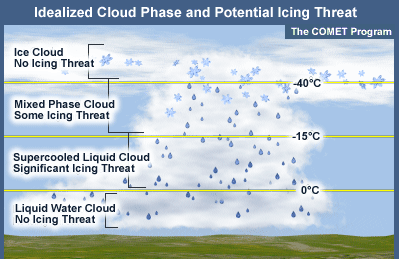
When flying in clouds with a temperature near, at, or below freezing, any liquid precipitation can be dangerous to aircraft. While snow is less likely to present a hazard, freezing rain, consisting of supercooled water droplets suspended in convective updrafts, should be avoided at all costs. These droplets can remain in liquid form down to temperatures well below 0˚C, only to flash freeze when they contact an object, such as the wing of an airplane. If these droplets are large enough, they can adhere to the plane faster than the on-board de-icing systems are capable of removing them. Should this occur, ice will rapidly build up on the leading edges of the wings, interfering with the smooth airflow necessary to generate lift.
The Saab 340, like other airliners, is equipped with rubber de-icing boots which inflate inside the leading edges of the wings and tail to break off accumulated ice. But there is an upper limit to their effectiveness, as the systems are only required to handle rates of ice accumulation defined by regulations as “mild” to “moderate.” Icing classified as “severe” — typically that involving supercooled droplets larger than 50 microns in diameter — is not covered, and could exceed the ability of the Saab 340’s (or any aircraft’s) de-icing capabilities.
Captain Juan Raffo had encountered “severe” icing before, while flying at 20,000 feet with an outside air temperature of -25˚C. Circumstantial clues seemed to suggest that conditions were similar on the night of flight 5428. As the plane climbed toward its cruising altitude, he did not notice any ice; in fact, the slight buildup only began after reaching 17,800 feet, suggesting that they had climbed into icing conditions, and that the worst probably lay above them, just like before. He therefore reasoned that descending toward 14,000 feet would take them farther away from the icing conditions. He had no idea that he was actually plunging headlong into the worst part of the ice storm.
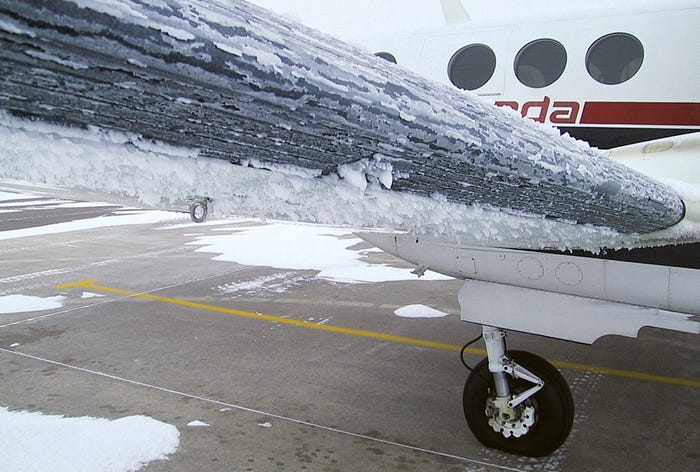
Almost as soon as flight 5428 began its descent, the rate of ice accumulation accelerated dramatically. “It’s like it’s hitting ice everywhere,” Captain Raffo commented.
“A little bit of ice is forming,” said First Officer Bolatti.
“It still builds a lot,” said Raffo. “It builds more than it sheds.”
“I have some below in the middle,” said Bolatti, probably glancing back at the wings. “It didn’t shed well.”
“In these conditions, ice builds up in the radiator, the intake can’t cope,” said Raffo.
Glancing back again, Bolatti exclaimed, “Look man, it’s formed a bodoque, I can’t believe it. Look, Juan, look at mine there.” The Spanish word bodoque, which has no convenient English translation, refers to an irregular, wrinkly shape, made up of loose bits agglomerated into a single mass. His use of the term suggested that the wings were now so covered in ice that the frozen layer was beginning to sculpt itself into fantastical new forms.
“That little bit on the windshield, we could make a stalactite,” Raffo joked.
“Do you know what the belly must look like?” Bolatti said. They were descending with a slight nose-high attitude, causing the airstream to impact the plane from below, and Bolatti was clearly aware that there must be ice building up there, too.
“Why do you think this plane crashes so much? This plane is useless for this route, but they don’t want to understand it,” Captain Raffo lamented. It is unclear what he meant, as the Saab 340 has had very few crashes, although its record in icing conditions is mixed — more on that later.
“This model of plane tolerates one one zero,” First Officer Bolatti said, suggesting an even lower altitude of 11,000 feet. “And one hundred too,” he added, providing 10,000 feet as another alternative. Both pilots had by now realized that conditions at 14,000 feet were worse than at 17,000, but they weren’t sure whether they should descend more or cut their losses and try to push through it.
“No, let’s wait,” Raffo decided. “Last time I descended to one twenty [12,000 feet] and we continued gathering ice like fools. Let’s stay here so as to be in an intermediate situation. We’ll continue with the anti-ice from here to there.”
At 18:16, flight 5428 leveled off at 14,000 feet, in the heart of the ice layer, her pilots unwilling to descend farther for fear that conditions could become even worse. Besides, on their weather radar, they could see the edge of the clouds approaching. All they needed to do was hang in there for a few more minutes with the de-icing systems running and they would get through just fine — or so they thought.
As they settled in at 14,000 feet, the crew continued to monitor the ice on their wings. “There, it broke off,” said Bolatti.
“Now, yes. But look, it’s very thick,” Raffo cautioned.
“I have it all down the leading edge, see, and all in the inside,” Bolatti said, probably looking at the engine nacelle.
“Let’s maintain it this way,” said Raffo.
“It’s not spreading so much,” Bolatti agreed. But moments later he said, “Look at the ice forming there.”
“Look at the bodoque,” said Raffo. “I don’t know if it’s the same on your side.”
“Between the two de-icing boots?”
“No, on the navigation lights, on the tip. Bodoque!”
“This is beautiful,” said Bolatti. “We could take it and eat it.”
“We should freeze it very well and take it as a souvenir for those who fly with excess weight,” Raffo joked, at the expense of some of his less cautious colleagues.
“Man, you know what it would be if we were overweight!?” said Bolatti.
Just then, Captain Raffo looked down and noticed that they were losing speed. Their airspeed had already fallen from over 170 knots during the descent to 145 knots now, barely 30 seconds after leveling off. Something was clearly not right. “Look how the speed is dropping, like a bitch’s underwear,” he joked.
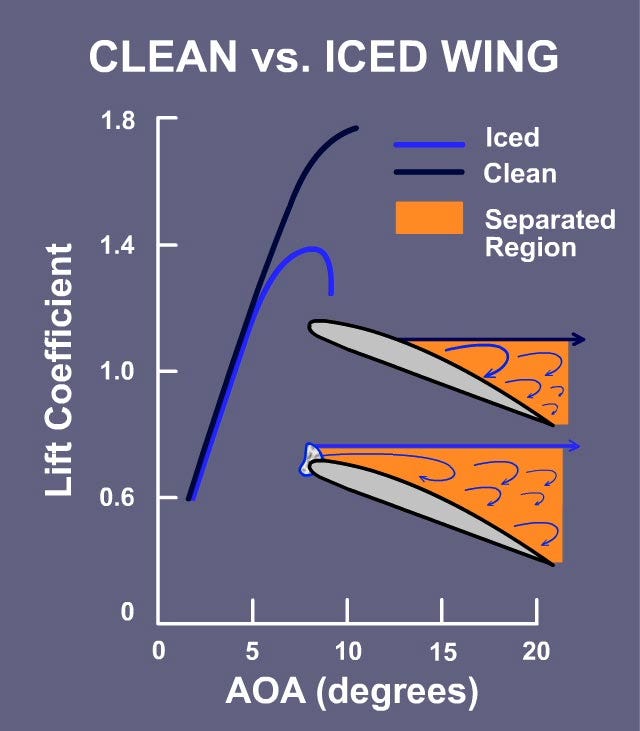
All of a sudden, the plane began to vibrate alarmingly. The aircraft was on the verge of a stall, its speed having dropped too low to sustain continued flight with so much ice interrupting the airflow over the wings. As a stall approaches, this airflow begins to separate from the upper surface of the wing, causing a severe vibration known as “stall buffet,” serving as a natural warning to the crew — if they recognize the symptoms. But as flight 5428 began to experience stall buffet, Captain Raffo mistook it for something completely different: “Oh, how it’s shaking!” he exclaimed. “The propeller is gathering ice. Put the propeller on maximum.”
Ice on the propellers is a potential concern while flying in icing conditions, and it was the primary issue Raffo had faced during his previous icing encounter. If too much ice accumulates on the propeller, the engines’ power output could start to drop and the plane can begin vibrating noticeably. However, the problem is easily corrected by increasing the propeller RPM, generating greater centrifugal force which literally catapults the ice right off the blades. Therefore, when he felt the plane start to vibrate, Captain Raffo believed that ice had built up on the propellers, so he ordered First Officer Bolatti to increase propeller RPM, which he promptly did. This action would ultimately prove useless, as the vibration was coming not from the propellers, but from the wings themselves, which were seconds away from a catastrophic loss of lift.

Just then, the stick shaker stall warning activated, physically shaking the pilots’ control columns to warn them of the danger. Three seconds later, with their speed dropping through 134 knots, the airflow completely separated from the upper wing surface and the airplane stalled. In the absence of lift, the plane started to drop like a stone, the nose fell through, and they began to dive toward the ground, pitched more than 20 degrees nose down. Simultaneously, the plane rolled hard to the left, reaching 82 degrees of bank in a matter of seconds as the disrupted airflow over the wings rendered the ailerons close to useless.
“Ah, puta madre!” Raffo shouted.
Warnings began to blare, “BANK ANGLE! BANK ANGLE!”
“What the fuck is happening!?” Bolatti exclaimed.
Captain Raffo tried to level the wings, but instead the plane snapped over 50 degrees to the right in seconds. Fighting against his own plane, Raffo rolled to 45 degrees left before the plane snapped back to the right a second time, rolling past 120 degrees into a terrifying inverted nosedive. The plane had become completely uncontrollable, hurtling toward the ground as it spun around and around, rolling wildly in both directions.
“Come on! Don’t be a son of a bitch!” Bolatti screamed at the aircraft itself.
“Pull back!” Raffo yelled over the continuing sound of the stick shaker.
“Pull back!” Bolatti echoed. “Come on, come on, we’re going to save it, come on! Up, you puta madre!”
Raffo advanced the engines to maximum power, but they were still out of control, and running out of altitude.
“Easy, easy, we’re going to save it!” Bolatti shouted. Keying his microphone, he broadcast a final, desperate cry for help: “Mayday, mayday, Sol five four two zero, mayday, mayday, mayday, mayday!”
And then the transmission went dead. Forty-four seconds after the plane first began to stall, Sol Líneas Aéreas flight 5428 plowed nose-first into the Patagonian steppe, instantly killing all 22 passengers and crew. A burst of flame flashed briefly in the night, followed by the drum of debris raining down upon the desert, and then a pall of silence once more descended over the desolate plateau at the bottom of the world.
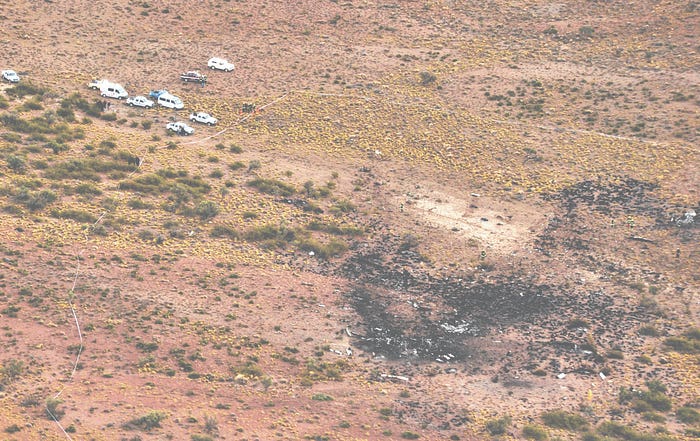
◊◊◊
Within minutes of the crash, search and rescue personnel were notified of an aircraft which had made a mayday call and was not responding to communications, but the controller had only a vague sense of where it may have crashed. The discovery of the crash site was made by a local resident, one of the only witnesses to the accident, who subsequently informed the police. The plane had carved out a crater in the cold earth before spewing debris outward for another 200 meters, much of it on fire. Scattered throughout were the unidentifiable remains of the flight’s 19 passengers and three crewmembers, a scene so horrible that witnesses declined to describe it.
The following day, investigators from Argentina’s Civil Aviation Accident Investigation Board (JIAAC) arrived at the remote crash site, located some 28 kilometers north of the tiny village of Prahuaniyeu and 26 kilometers from the nearest paved road. From the charred remains they pulled the plane’s two black boxes, badly damaged but just intact enough to retrieve the data. Damage to the tape had left the final seconds of the flight data unreadable, and the quality of the cockpit voice recording was poor, but from these shreds of evidence a picture of the events on board the plane began to emerge.
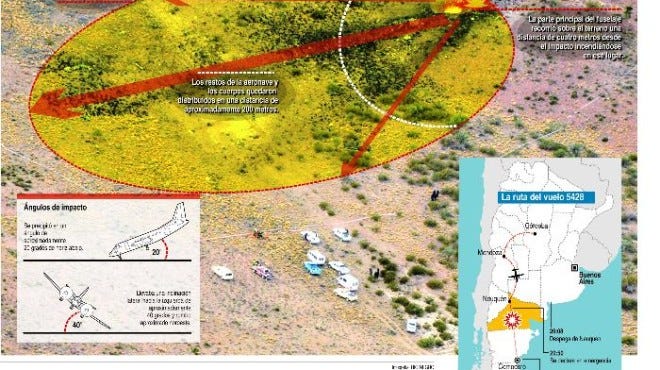
An analysis of the data made one thing clear from an early stage: that the plane did not behave normally, and that this discrepancy was surely the result of ice on the wings. In fact, a study by the manufacturer showed that the performance degradation was so severe that the rate of ice accumulation likely exceeded that which the plane was certified to withstand. As the ice built up faster than the de-icing boots could remove it, the plane began to lose speed and its angle of attack began to rise until it stalled at a speed of 129 knots, much earlier than it would have stalled under normal conditions. That left three main questions: why did flight 5428 enter the area of severe icing in the first place, why couldn’t the pilots recover from the stall, and could the pilots have prevented the crash — either by avoiding the icing conditions or by powering through them?
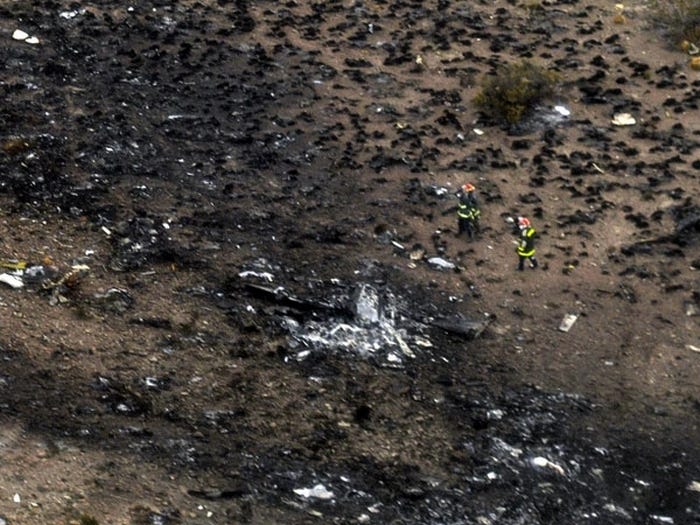
Investigators found that none of the weather information given to the flight crew indicated that severe icing was possible along their route. The pilots had no satellite images of the weather situation in the region, and their forecast, which called for only mild icing, was several hours out of date because the government meteorological office in Neuquén had closed at 16:00. The airline dispatcher could have provided the crew with additional information, but he told the JIAAC that he did not do so because they never asked for any — even though it was his duty to provide them with whatever weather data were available. Investigators would later note that the dispatcher had not received recurrent training in several years, and his certification had lapsed, leaving him unqualified to support flight operations in the first place.
Without any specific information about how bad the icing conditions were or where exactly they were located, the pilots were left to assess the situation based on experience alone. And since First Officer Bolatti was so new to the airline and the Saab 340, that responsibility fell entirely on the shoulders of Captain Juan Raffo.
Raffo’s actions during the flight indicated that he was trying to guess the extent of the icing conditions based on his prior experience. This experience led him to believe that descending into an area with warmer temperatures would reduce the amount of ice adhering to the plane, when in fact the opposite was the case.
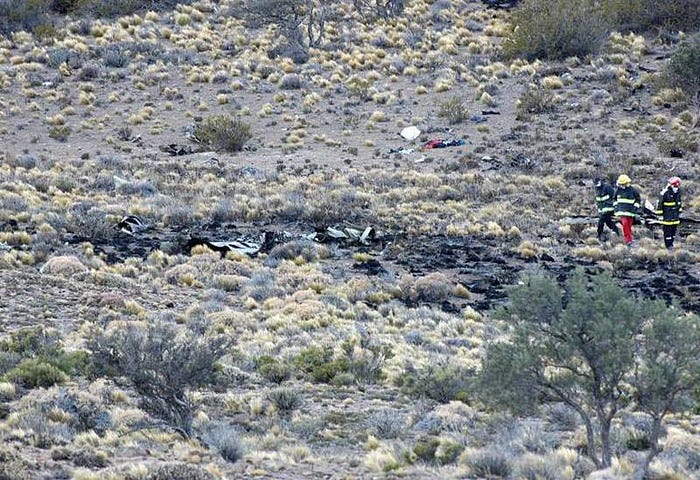
However, the pilots might have made the situation worse by failing to follow the proper procedures for flying in icing conditions. On the Saab 340 during such conditions, the pilot is supposed to maintain an airspeed about 15 knots higher than what would normally be used during that phase of flight, as laid out in a special table of figures in the operations manual. According to this table, the pilots should have maintained a minimum speed of 160 knots during climb and cruise, but their actual speed was only 136 knots throughout much of this period. A speed of 160 knots could have and should have been achieved by changing the autopilot’s airspeed mode from the “climb low” setting to the “climb medium” or “climb high” setting, but this was not done at any point, despite the airplane’s failure to reach the desired altitude of 19,000 feet.
Furthermore, according to the operations manual, in icing conditions the autopilot should not have been operated in “vertical speed mode,” in which it modifies the pitch angle to achieve a certain rate of climb selected by the crew. In this mode the autopilot could allow the speed to drop below the minimum required for icing conditions, so the manual instructed the crew to use the autopilot’s “speed mode” instead, under which it modifies the pitch angle to achieve a particular airspeed set by the crew, regardless of the resulting rate of climb. Nevertheless, the crew of flight 5428 did not switch the autopilot to speed mode at any point prior to its disconnection at the top of the descent. Had the pilots followed these procedures, they would have been able to climb to 19,000 feet, where conditions might have been better.
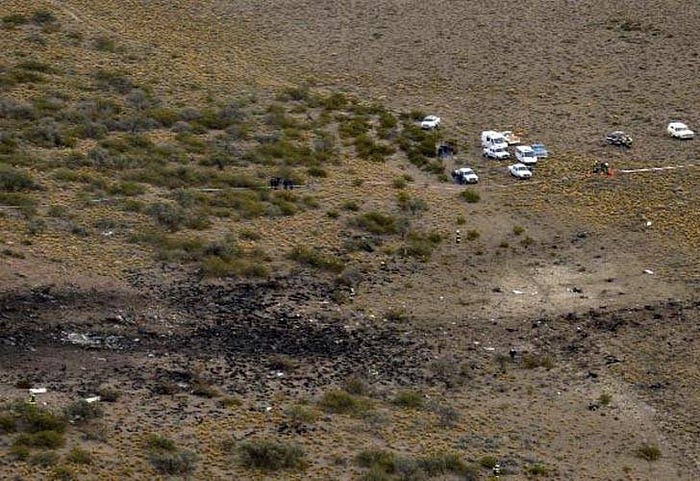
After the pilots decided to descend toward 14,000 feet, the rate of ice accumulation increased rapidly until it exceeded the Saab 340’s certification standards. However, a crash might not have been inevitable if the pilots had better understood what was happening. When they leveled off at 14,000 feet, their airspeed dropped by about one knot per second for 30 seconds. Commensurate with this decrease, the plane’s angle of attack, or AoA — the angle of the lifting surfaces relative to the airflow — began to increase in order to maintain a constant amount of lift, as lift is a function of airspeed and AoA. This process continued until the AoA exceeded the critical point and the plane lost lift and stalled.
Despite the fact that they were aware of this alarming loss of speed, the pilots never advanced the thrust levers to max power. Instead, Captain Raffo immediately guessed that the loss of speed and sudden vibration were due to ice on the propellers, which can degrade the amount of thrust produced for any given thrust lever position. Therefore, believing that the thrust setting was adequate but that the engines were not actually providing the selected thrust, he increased propeller RPM to throw off any ice that may have accumulated on the propeller blades. Because thrust output is primarily a function of blade angle and not RPM, this did nothing to solve the fundamental problem, which was that the drag from the ice on the wings was greater than the thrust provided by the engines, causing the plane to slow down.
While applying max power would have been the correct action to take, and certainly would have prolonged the flight, it cannot be known with certainty whether it would have been enough to save the plane. With ice accumulating faster than the de-icing equipment could remove it, it was only a matter of time before drag exceeded thrust even with the engines at max power. The stall could have been avoided if the plane had emerged from the icing conditions before this occurred, but this will always remain a hypothetical as the exact extent of the severe icing conditions that night could not be determined.

Once the stall took place, there was very little time to effect a recovery. The JIAAC determined that with so much ice on the wings, the resulting adverse aerodynamic effects would have rendered the airplane essentially uncontrollable from the moment it stalled. The pilots initially responded to the stall by applying the procedure for recovering from a nose down upset, which was to decrease engine power and pull up, but this quickly proved counterproductive. After ten seconds Captain Raffo applied max engine power, but he was unable to level the wings or pull out of the dive. In fact, every time he attempted to do so, the stall warning would come back on and the plane would roll uncontrollably in random directions. Investigators noted that on the Saab 340, a severe ice buildup will blank out airflow over the ailerons during a stall, causing roll control to be lost. A deadly cycle thus repeated over the course of the plane’s 44-second plunge: Captain Raffo would attempt to pull up, the plane would start to stall again, control over the ailerons would be lost, the plane would roll violently to one side, and the dive would continue. The cockpit voice recorder in fact captured the sound of the stall warning five more times before the plane struck the ground, coming back to life every time Captain Raffo attempted to stop the deadly plunge.
Some readers may be wondering why, if the plane was pitched nose down the entire time, it still kept stalling. The answer is that a plane can stall at any pitch attitude and airspeed if its angle of attack is too high. If the plane is falling on a 45 degree slope and the pilot maintains a pitch attitude of 20 degrees nose down, then the angle of attack will be about 25 degrees, well above the stall AoA. In this scenario, if the pilot instead pitches to 40 degrees nose down, the AoA will decrease and it will be possible to pull out (as shown in the above diagram). The situation faced by the pilots of flight 5428 was very similar to this, as the CVR recorded repeated stall warnings despite the fact that the plane was pitched between 12 and 26 degrees nose down all the way until the flight data became unreliable at about 10,000 feet.
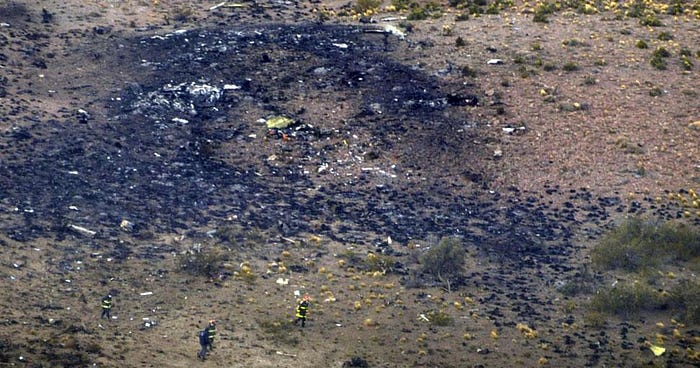
The only way out of this situation would have been to pitch forward further into the dive, and in fact an automatic system called the stick pusher kept trying to do this in an attempt to reduce the AoA, but the pilots repeatedly overrode it.
Recovery may have been possible if the pilots had pitched down immediately, but their training actively discouraged this maneuver. The stall recovery training at Sol Líneas Aéreas was based on an outdated curriculum which encouraged pilots to minimize altitude loss. While pitching down into a dive is a reliable way to recover from a stall, many airlines used to teach pilots to respond to the activation of the stick shaker stall warning by increasing engine thrust and adopting a level pitch attitude, which would result in very little if any altitude loss, but was inappropriate for the situation in which the crew of flight 5428 actually found themselves, where attempting to level off would make the stall worse. In the event, the pilots never stopped trying to pull out of the dive prematurely, and even if they had stopped, it probably would have been too late to avoid impacting the ground.
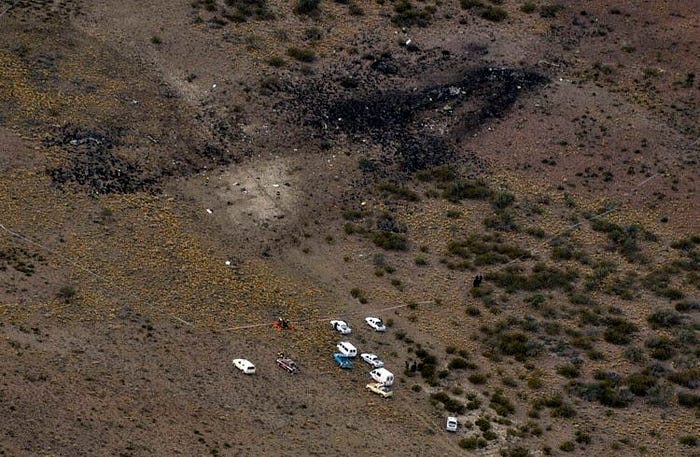
The outdated stall recovery procedure was not the only area of deficient training at Sol Líneas Aéreas. Investigators found that during Captain Raffo’s simulator training, he had not been evaluated on his upset recovery, approach to stall, or stall recovery skills, even though these were required items. Furthermore, the airline did not provide Line-Oriented Flight Training (LOFT), which is intended to help pilots deal with complex scenarios that may be encountered during normal operations, even though LOFT was required under Argentine law. And most worrying of all, Sol did not provide the pilots with any training on how to operate the de/anti-icing systems aboard the Saab 340, and its simulator training program did not include any cold weather scenarios because the simulators weren’t capable of replicating the effects of ice on the wings. This lack of training may have been the reason that the pilots did not use the speed tables for flight in icing conditions and misdiagnosed the cause of the loss of speed and sudden vibration.
But despite the fact that its pilots received very little training related to ice, the airline did not consider the possibility of icing when it undertook its risk assessment before launching the Neuquén-Comodoro Rivadavia route using the Saab 340. Airline management told the JIAAC that they believed the risk of ice was negligible because the pilots had sufficient experience flying in Patagonia — and yet, if they had not been properly trained to deal with in-flight icing, pilots could only gain this experience the hard way.

This was but one of several revelations which seriously called into question the airline’s decision to launch this route in the first place. A review of documents filed with the Argentine Civil Aviation Authority revealed that Sol Líneas Aéreas did not have approval to fly the Neuquén-Comodoro Rivadavia route, and was instead re-applying every month for permission to operate it on a “non-scheduled” basis, effectively allowing them to add the route without it being subject to the level of scrutiny involved in the launch of a new scheduled operation. At no point during this repeating process did the Civil Aviation Authority pay heed to the fact that neither Neuquén nor Comodoro Rivadavia was in the list of aerodromes where Sol Líneas Aéreas was approved to operate.
To make matters worse, the airline chose to operate this route using an airplane which was known to struggle in icing conditions, as three other Saab 340s — two in Australia and one in California — had previously lost control due to ice on the wings, although in those cases the pilots managed to recover. Captain Raffo could even be heard questioning the airline’s decision to buy the Saab 340 for exactly this reason. But despite the aircraft’s history, and the frequent bad weather in Patagonia, the airline didn’t bother to train pilots to handle icing conditions or provide them with up-to-date meteorological information. All around, Sol Líneas Aéreas seemed to have fallen short of even the bare minimum amount of preparation required to fly this route safely.
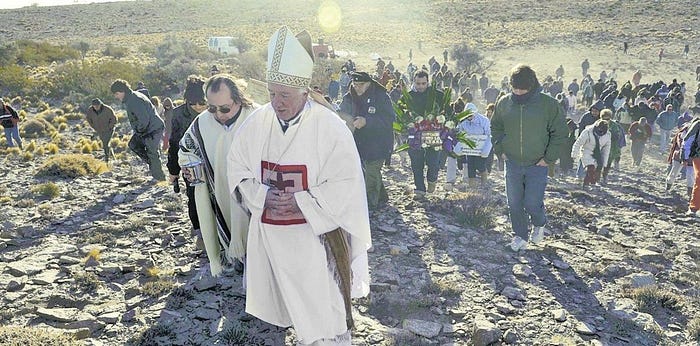
After more than three years of investigation, the JIAAC published a final report which blamed the crash on a buildup of ice exceeding the airplane’s certification standards, with inadequate speed management by the crew and inadequate provision of weather information by the airline listed as contributing factors. As for who was to blame, that was a matter to be settled in the courts.
Following the crash and the revelations uncovered by the JIAAC, nine managers and executives at Sol Líneas Aéreas were charged with negligence endangering the safety of an aircraft, as prosecutors alleged that flight 5428 should never have been allowed to take off, not only because of the dangerous weather but because two airworthiness directives related to the propellers had not been completed, rendering the plane legally unairworthy. However, the managers argued that it is up to the captain of the aircraft to decide whether to fly, and that all blame must lie with him. In 2017, a judge accepted this argument and dismissed the case. This attempt to evade responsibility outraged the families of the victims and their lawyers, who argued that the airline should never have ordered Captain Juan Raffo to carry out the flight in the first place. “The airline forced the pilots to fly an unauthorized route, which frequently has ice, without training the pilots in ice, but, for the judge, the fault lies with the crew,” said Romina Barreto, a lawyer for Carlos Ruiz, father of a crash victim. Ruiz himself added more bluntly, “The pilots were victims in this story. They were sent to die with the 19 passengers.”

News reports indicate that the case was reopened a month after being dismissed, but it remains unclear whether any of the managers were convicted. The airline itself went out of business in 2015, having continued its operations for four more years despite violating numerous regulations. To what extent corruption enabled these violations both before and after the crash may never be known with certainty.
For its part, the JIAAC issued 24 safety recommendations as a result of the accident, aimed at entities including the Argentine CAA, Argentine flight training centers, Saab, the National Meteorological Service, the Air Force, and the airline, touching on topics ranging from training on recovery from unusual attitudes, to modification of flight simulators, to the hours of operation of airport weather offices. The authorities’ precise responses to these recommendations are not publicly available, but it can be noted that in the more than 11 years since the loss of flight 5428, there has not been a serious commercial air accident in Argentina. Maintaining that safety record will rely on the safety-consciousness of both those who manage airlines and those who regulate them. For all parties, Sol Líneas Aéreas flight 5428 ought to stand as a stark example of what happens when an airline mistakenly believes that operating a flight is as simple as telling the pilots to fly from point A to point B. Without a more comprehensive risk assessment, they might not get there alive.
_________________________________________________________________
Join the discussion of this article on Reddit!
Visit r/admiralcloudberg to read and discuss over 220 similar articles.
You can also support me on Patreon.
